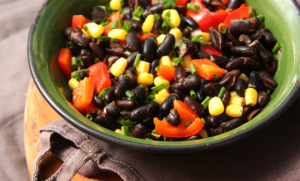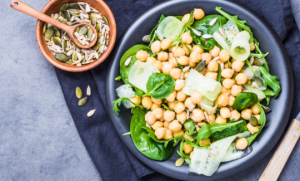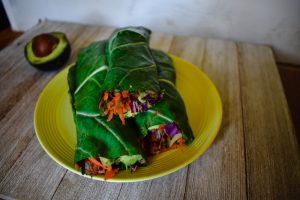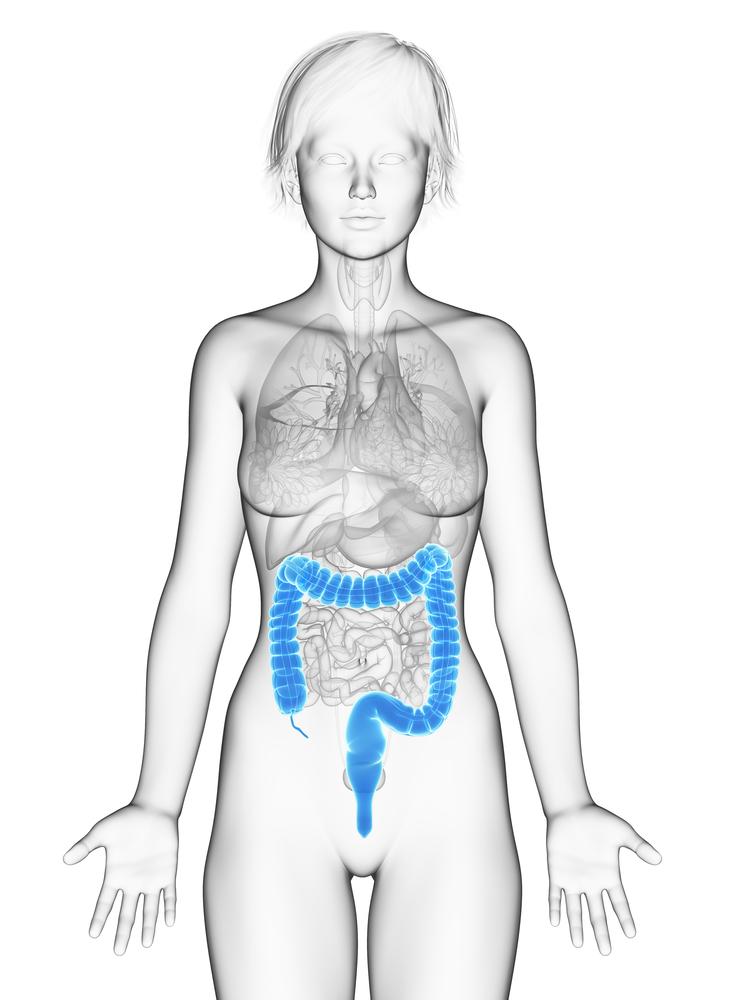by Sarah Lawrence | Jun 12, 2021 | Cooking, Health
Even if you’re a meal-planning pro, everyone has those days when being able to have a meal on the table in a snap is a relief. Enter some tasty 10-minute meals that are healthy too! When you see how easy and fast it can be to get healthy food on the table, you’ll understand why I feel like your fairy Godmother sprinkling the glitter of happiness and health your way!
Fresh, seasonal veg, canned beans, tomato sauce, herbs… wait til you see the magic that can happen with simple, fresh ingredients and a smidgeon of time.
Zucchini Pizzas with Veg and Greens:
 Place 1/4 inch thick slices of zucchini on a large baking sheet. Brush each lightly with olive oil. Layer with thinly sliced tomato. Sprinkle with dairy-free cheese shreds (or your favorite mozzarella). Scatter chopped veggies (onion, bell pepper, mushroom, olive). Broil 5-7 minutes or until top is hot, edges crispy, cheese melted. Remove from oven, top with arugula. Note: slice zucchini in rounds for pizza circles or lengthwise for a flatbread feel. Alternatively, slice zucchini in half lengthwise and scoop out the seedy bits. Then stuff the hollow with your pizza ingredients and broil to warm through.
Place 1/4 inch thick slices of zucchini on a large baking sheet. Brush each lightly with olive oil. Layer with thinly sliced tomato. Sprinkle with dairy-free cheese shreds (or your favorite mozzarella). Scatter chopped veggies (onion, bell pepper, mushroom, olive). Broil 5-7 minutes or until top is hot, edges crispy, cheese melted. Remove from oven, top with arugula. Note: slice zucchini in rounds for pizza circles or lengthwise for a flatbread feel. Alternatively, slice zucchini in half lengthwise and scoop out the seedy bits. Then stuff the hollow with your pizza ingredients and broil to warm through.
Veg Skillet:
 Toss 2 cups pre-sliced mushrooms in a large skillet, season with salt, pepper, cumin, and oregano to taste. Add 28 oz. diced tomatoes (with their liquid) + 1 cup chunky Salsa + 1 can steamed lentils or black beans (rinsed, drained). Stir in 10 oz. frozen corn + 1 cup sliced zucchini or bell pepper. Reduce heat to medium-low and simmer for 8 minutes. Serve with a generous amount of minced cilantro or parsley. Note: Easily turn this into a delicious soup by adding a carton of organic broth — a cup of cooked quinoa and a handful of chopped spinach or kale makes this a hearty and nutritious soup.
Toss 2 cups pre-sliced mushrooms in a large skillet, season with salt, pepper, cumin, and oregano to taste. Add 28 oz. diced tomatoes (with their liquid) + 1 cup chunky Salsa + 1 can steamed lentils or black beans (rinsed, drained). Stir in 10 oz. frozen corn + 1 cup sliced zucchini or bell pepper. Reduce heat to medium-low and simmer for 8 minutes. Serve with a generous amount of minced cilantro or parsley. Note: Easily turn this into a delicious soup by adding a carton of organic broth — a cup of cooked quinoa and a handful of chopped spinach or kale makes this a hearty and nutritious soup.
Herbed Chickpea Salad:
 Drain 1 can (28 oz) garbanzo beans/chickpeas (reserve liquid for another use). Toss the chickpeas in a large bowl with the juice of 1 lemon, salt and pepper to taste, 2 Tablespoons olive oil, 1 clove of garlic (peeled and minced). Mix ingredients together and adjust seasoning if needed. Serve on a bed of mixed greens. Sprinkle the top with 2-3 Tablespoons of hemp seeds. Here’s another version that is a favorite in my house!
Drain 1 can (28 oz) garbanzo beans/chickpeas (reserve liquid for another use). Toss the chickpeas in a large bowl with the juice of 1 lemon, salt and pepper to taste, 2 Tablespoons olive oil, 1 clove of garlic (peeled and minced). Mix ingredients together and adjust seasoning if needed. Serve on a bed of mixed greens. Sprinkle the top with 2-3 Tablespoons of hemp seeds. Here’s another version that is a favorite in my house!
Quick Fresh Rolls:
 Wash 1-2 leaves of purple or green cabbage or swiss chard (per serving). Slice out the thick part of the stem if needed. Mash the flesh of 1/2 an avocado per serving — season with salt, pepper, garlic, lemon or lime juice. Lay out the cabbage leaves and spread some avo mash on each one. Top with sliced baked tofu, tempeh or roasted chicken or salmon (or your favorite clean protein). Add a slice of pickle or fresh cucumber and roll the contents up in the leaf. Eat! Note: prepared hummus can be used in place or mashed avocado or in addition to it! Broccoli slaw mix is another great filler.
Wash 1-2 leaves of purple or green cabbage or swiss chard (per serving). Slice out the thick part of the stem if needed. Mash the flesh of 1/2 an avocado per serving — season with salt, pepper, garlic, lemon or lime juice. Lay out the cabbage leaves and spread some avo mash on each one. Top with sliced baked tofu, tempeh or roasted chicken or salmon (or your favorite clean protein). Add a slice of pickle or fresh cucumber and roll the contents up in the leaf. Eat! Note: prepared hummus can be used in place or mashed avocado or in addition to it! Broccoli slaw mix is another great filler.
To make this meal without cabbage or chard leaves, try it with rice paper wrappers. Quickly rehydrate one wrapper at a time in a shallow pan of warm water. Remove promptly and lay the wet wrapper on a clean kitchen towel. Fill per directions above and wrap up like a burrito or an egg roll. Rice paper wrappers are shelf stable and make a great addition to any pantry for quick, healthy fresh rolls!
Noodle Bowl:
 Cook soba noodles in boiling water for 8 minutes — or soak thin rice noodles in hot water until pliable — drain and set aside. Meantime, whisk together 2 Tablespoons each miso paste, lime juice, water, sriracha (optional). Put cooked noodles in serving bowls. Add shredded carrots, sliced cucumber, grape tomatoes, snap peas. Add cubes of cooked protein like tofu, tempeh, chicken, fish, beef, etc if desired. Top with a drizzle of the dressing and fresh minced cilantro, green onion, jalapeno or sprouts if desired. Note: A little natural peanut/almond or sunflower butter added to the dressing can make for a delightful Thai inspired flavor. Some minced ginger or ginger juice also tastes nice.
Cook soba noodles in boiling water for 8 minutes — or soak thin rice noodles in hot water until pliable — drain and set aside. Meantime, whisk together 2 Tablespoons each miso paste, lime juice, water, sriracha (optional). Put cooked noodles in serving bowls. Add shredded carrots, sliced cucumber, grape tomatoes, snap peas. Add cubes of cooked protein like tofu, tempeh, chicken, fish, beef, etc if desired. Top with a drizzle of the dressing and fresh minced cilantro, green onion, jalapeno or sprouts if desired. Note: A little natural peanut/almond or sunflower butter added to the dressing can make for a delightful Thai inspired flavor. Some minced ginger or ginger juice also tastes nice.
More tasty 10-minute meals that are healthy too… What is your go-to creation? Comment below!
by Sarah Lawrence | Jun 8, 2021 | Health, Hormones & Neurotransmitters, Immune & Inflammatory Balance
Castor oil comes from Ricinus communis, the castor plant. Castor oil has many health benefits. It can be applied topically or taken internally (in this post we will not be covering internal use). The main active component in castor oil is RA (ricinoleic acid). RA relieves pain and inflammation. Because it is inexpensive, widely available, generally regarded as safe and effective, let’s talk about how to apply a castor oil pack (and why you’d want to)!
BENEFITS OF TOPICAL CASTOR OIL PACKS
HOW TO APPLY A SIMPLE CASTOR OIL PACK
- Rub 1 tsp-1 Tbsp castor oil into the skin in your area of interest (liver, abdomen, lungs, joints, etc) or Saturate a small piece of cloth with castor oil and place over your liver or area of interest
- Cover the area with an old towel or wrap the area comfortably with an ace bandage.
- Throw on an old t-shirt (castor oil stains fabric, so wear something that is not precious to you)
- Apply hot water bottle or a heating pad to the pack area
- Sit or lay down, relaxing for 45 minutes to 1 hour (safe to wear for a few hours or overnight as well — NOT with the heating pad)
WHEN AND HOW OFTEN TO APPLY A CASTOR OIL PACK
Apply castor oil packs 2-3 times per week for general detoxification. A castor oil pack can also be beneficial:
- before an enema, colonic, or liver/gallbladder flush;
- during chelation treatment;
- for abdominal pain;
- in addition to abdominal visceral massage.
DO NOT APPLY CASTOR OIL PACKS IN THESE INSTANCES
- over an open wound
- on abdomen when menstruating
- on abdomen during pregnancy (castor oil can induce labor and should only be used during pregnancy if indicated by your physician or doula.)
- if you are currently being treated for any medical condition, it’s best to check with your doctor before using castor oil.
BONUS USES
Castor oil can be very nourishing for the hair and scalp. It is used as a serum to promote hair growth. Eye lashes can grow in stronger, thicker and longer! Ricinoleic acid is the compound in castor oil that may cause this benefit! Ricinoleic acid can increases PGE2 in the scalp (and on other skin). PGE2 is a fatty acid, which seems to be vital for follicle health and hair growth.
When applied to the skin, castor oil is known to increase penetration of topicals and make it easier for things applied next to be absorbed. This is one of the reasons I love pairing castor oil with essential oils! Interested in my favorite combinations? Email me (sarah at yourholistichealthcoach dot com) if you’d like my Castor Oil Pack cheat sheet with essential oil blend bonus — and let me know where to email your copy!
Here’s my favorite hexane-free castor oil:
by Sarah Lawrence | May 31, 2021 | Digestion, Health, Immune & Inflammatory Balance
Belly bloat is uncomfortable and, often, embarrassing. While some common causes of bloating can be obvious (overeating, drinking carbonated beverages, constipation), others may be more elusive. Whether it’s acute or chronic, it is good to know why bloat is happening. Let’s look at two surprising reasons behind belly bloat that you may not have explored yet. We’ll also cover a few of my best tips for dealing with bloat (no matter what’s the cause.)
 Surprising Reason #1:
Surprising Reason #1:
SIBO. Small Intestinal Bacterial Overgrowth. It sounds complicated… and it is! So often, we hear about using probiotics as a way to ease belly bloat and digestive issues. In SIBO, too much bacteria ends up colonizing the small intestine. Common symptoms include INTENSE bloating after any meal (even water). Nausea, constipation or diarrhea can also occur.
If you’ve ruled out common causes of bloating, see your doctor to check for SIBO. Testing involves a breath test that measures the amounts of hydrogen and methane in your breath over the course of a few hours. Treatment can include dietary modifications and/or a short course of antibiotics.
Surprising Reason #2:
Endometriosis! Persistent gas and bloating is one of the most common things women with Endometriosis encounter. Because these symptoms are commonly caused by other issues, women are often dismissed and given antacids. When the pain and bloating persist or worsen over time, doctors may begin to look for other causes of inflammation in the gut. Still, SIBO and IBS diagnoses are common among women with Endometriosis. If a gastroenterologist has diagnosed you with SIBO or IBS and treatment including specialized diet or antibiotics and it is not working, it may be time to see an endometriosis specialist.
Figuring Out What is Causing Your Bloat
Figuring out what is actually causing you to be bloated can be harder than a 10,000 piece puzzle. While it may seem overwhelming, there are a few things to look at first.
Where is your bloat?
You may think that it’s your stomach causing issues, when the bloating may be coming from your intestines. Take a look at the images below to see if you can determine the location of your bloating or gas pains.
Notice that the stomach is positioned low in the chest cavity or at the very top of the abdominal cavity. In women, the stomach is basically just under your ribcage below your breasts. The small intestine is the next stop after the stomach. If you pain and bloating happens shortly after meals, it may be in your stomach or small intestine. Several hours after a meal may indicate the lower part of your small intestine or the start of the large intestine. Where most people hold low on the abdomen for gas pain is actually intestinal pain rather than stomach!
Digestion begins in the mouth. After chewing, the food bolus travels down the espohagus (long blue tube) and enters the stomach (kidney bean shaped blue pouch under the breasts)
In the stomach, food continues to be broken down by digestive juices. When it leaves the stomach, ideally, food is liquified and considered “chyme” as it enters the small intestine.
Chyme travels into the large intestine. Water is reabsorbed through the colon wall. Bacteria continue to break down food particles and form stool that is excreted through the anus.
Think about your diet.
Are you eating anything new? Is there anything different about when, where or how you eat? Sometimes a new food or a food cooked in a different way can be the culprit. If you normally sit to eat and find symptoms happen when you’re eating on the go or when you’re rushing, then you can likely make simple modifications and ease your symptoms.
Get to know your response.
Do you know how you feel after you eat eggs? How about caffeine, gluten, dairy, sugar, etc? Do certain foods increase your bloating response? Do certain foods increase constipation? Are your symptoms different at various times of the month (hormonal cycles, moon phases, deadlines, etc)? By recording your symptoms along with your intake (food, drink, stress, work, exercise, etc) and output (bowel movements, emotions, energy level, etc) you can begin to assess your body’s response. You can use a notebook or use a form like this one that I use in my practice.
Whether you figure out what’s causing your bloat or need to take the next step and see your doctor, 5-10 days of journaling can provide some insight for your clinician.
Seek support
If your bloating doesn’t ease after some simple shifts then you may want to seek the support of your doctor. A general practitioner can assess your overall health and guide you to a specialist if needed.
Tips for Relieving Bloat
If you’re tired of being bloated all the time, here are a few things that may help:
Chew — Chewing food until it’s liquid is needed for proper digestion. Chew smoothies and soups so your stomach gets the signal that food is coming and so digestive juices are stimulated. Simply slowing down and chewing can drastically help digestion!
Sip still water – Still water (rather than carbonated) may relieve bloat. Avoid drinking too much with meals. Instead, sip during meals.
Get regular exercise – Walking is one of the best exercises to help relieve bloating, but there are also some yoga poses that can be great. Child’s pose, gentle torso twists, etc.
Try peppermint or ginger tea – Peppermint and ginger do wonders for bloating and the gut in general. Try drinking 1-2 cups of either tea each day and see if it helps. Fennel tea can be another ally for gas and bloating. This blend from Traditional Medicinals can be helpful: https://amzn.to/3yKwTGu
Address your medical conditions – Of course, if your bloating is from medical conditions like SIBO, Endometriosis, IBS, Crohn’s or Celiac, then you need to address those before your bloating will ease.
by Sarah Lawrence | Jan 29, 2021 | Digestion, Health
You may be wondering how there can even be 3 reasons to change your diet even if you don’t think you have any digestive problems. I mean, why would you want to change if you think everything is okay?
In the office, I hear it all the time… “I have no symptoms or problems that point to my digestive system, at all. I’m pooping a couple of times a week. Only have occasional gas, no food allergies. My digestion is fine.” So, why would you need to change your diet even if you don’t think you have any digestive problems?
Interestingly, the same people who don’t believe that their digestive system is an issue also talk about headaches. They have missed periods, heavy periods and joint pain. Anxiety, depression, thyroid imbalance and more. Believe it or not, all of those issues can have links to the digestive system and gut health.
What is the Digestive System?
Before we look at reasons to change your diet even if you don’t think you have any digestive problems let’s look at digestion. Here is a primer on the process of digestion and the digestive system.
Where it Begins
Digestion begins in the mouth. Amylase in your saliva begins breaking down carbohydrates. The mechanical action of chewing continues breaking down food to make it easier for your stomach to continue the process. What you swallow is called a bolus.
Once you swallow, it takes about 6 seconds for the bolus to move down your esophagus, past your epiglottis and lower esophageal sphincter into your stomach.
Where Most of the Breakdown Happens
Your stomach does most of the work breaking down what you eat. Protein digestion begins with Pepsin mixing into the bolus. Other stomach secretions are added and continue to liquify the bolus. Now it’s called chyme. Chyme passes through the pyloric sphincter into the small intestines.
In the duodenum (the first section of the small intestine), pancreatic enzymes (lipase) and bile are added to the chyme and fat digestion begins. Bile helps make fats water-soluble by breaking them into fatty acids and glycerols. (This is one reason why people who don’t have their gallbladder can have difficulty digesting fats!) The duodenum is the body’s primary location for digestion and biggest area for breakdown of nutrients.
Where Most Absorption Happens
Chyme moves through the small intestine from the duodenum to the jejunum, and absorption of nutrients begins. Most absorption happens in the jejunum before chyme enters the ileum. However, B12, bile salts and other products of digestion that weren’t absorbed in the jejunum are absorbed in the ileum. The Ileum walls have villi that facilitate absorption and the majority of GALT cells and Peyer’s patches that modulate the immune system.
Where It Ends
The ileocecal value opens the ileum/small intestine to the colon/large intestine. Water and electrolytes are reabsorbed here. Remaining indigestible waste leaves the body through the rectum, out the anus and into the toilet!
Digestion is more than just probiotics and your gut
As you can see from the path we traced, digestive isn’t just about the gut. Organs range from the mouth and salivary glands to stomach, gallbladder, intestines, and anus. Any disruption or imbalance in any step or accessory can cause issues with your health. It may not be that you suffer with constipation or diarrhea or gas, but you may experience fatigue or headaches, acne or joint pain. You may have an autoimmune imbalance or a thyroid problem or mental health challenges. Digestion, absorption, and elimination are all critical to overall health!
Let’s look at 3 reasons to change your diet even if you don’t think you have any digestive problems
According to an article in the journal Gut
The condition and function of the gastrointestinal (GI) tract are essential to our well being. After the respiratory tract, the GI tract constitutes the second largest body surface area, comparable in size to a tennis court. During a normal lifetime 60 tons of food pass through this canal, which is important for well being, but also constitutes an enormous threat to the integrity of the digestive tract and the whole body…
The GI surface is protected by large quantities of important secretions, from saliva in the oral cavity to colonic secretion in the large bowel. These secretions contain factors… for the lubrication of the mucosa and for functions of the GI tract but also hundreds of ingredients of importance for intraluminal microbial defense. The secretory functions are extremely sensitive to foreign chemicals.(1)
Knowing that the GI tract is both very important to health and very sensitive makes it important to protect.
1. Stress, Your Immune System and the Microbiome.
Stress affects the composition of protective intestinal flora. Even if you have no gastrointestinal symptoms, you likely have stress in your life. That alone can impact your health. It is VERY well documented that stress has a major impact on the immune system. 80% of the immune system stems from GALT cells in the intestines. So, protecting your gut with a healthy diet makes sense. (2)
2. Weight Issues and Risk of Disease.
A standard Westernized/American diet is associated with worse microbiome diversity and many accompanying issues, include obesity and other diseases. (3) Releasing excess weight and getting your body to a comfortable and healthy weight for your frame is one way to support your health. Simple dietary shifts and strategies can often help!
3. Mental Health.
Scientists know that there is a link between your gut and your brain. This is the brain-gut connection, or the gut-brain axis. Communication between your gut and brain is a two-way street, involving your immune, hormone and nervous systems.(4) People with gut conditions like IBS or inflammatory bowel disease are more likely to be diagnosed with anxiety or other mental health conditions. Some studies suggest that regulating your gut bacteria could influence your mood and may help to prevent and treat mental health conditions such as anxiety, depression and schizophrenia.(5,6) Autism spectrum disorders are also being studied for links with microbiome diversity and how changing microflora may help.(7,8)
Next Steps
What do you think? Do any of the 3 reasons to change your diet even if you don’t think you have any digestive problems resonate with you? Making dietary changes to help support your microbiome can have benefits. What changes you make depends on your current diet and your unique health circumstance. Are you working with a Functional Nutritionist or Dietician? Ask them what steps make sense for you and your health. If you don’t have nutritional support on your trusted team, reach out and schedule a discovery call with me. We will spend 15-20 minutes together, I’ll listen and ask a couple of questions and then share my thoughts on next steps you might want to explore.
Sources
- “Ecological control of the gastrointestinal tract. The role of probiotic flora” from the journal Gut 1998;42:2–7
- Psychological Stress and the Human Immune System: A Meta-Analytic Study of 30 Years of Inquiry (nih.gov)
- Links Between Immigration, Obesity, and the Microbiome – The Atlantic
- The Brain-Gut-Microbiome Axis – ScienceDirect
- Gut microbiome from patients with schizophrenia modulates the glutamate-glutamine-GABA cycle and schizophrenia-relevant behaviors in mice | Science Advances (sciencemag.org)
- Differences in gut microbiome composition between persons with chronic schizophrenia and healthy comparison subjects – ScienceDirect
- The fifferences between the gut microflora of children with autistic spectrum disorders and that of healthy children | Microbiology Society (microbiologyresearch.org)
- Mental Illness: Brain Disease or Gut Disease? | Psychology Today
by Sarah Lawrence | Nov 30, 2020 | Health
Hand Sanitizer Safety – What You Need to Know
In addition to Covid, ‘tis the season of coughs and sneezes and stomach bugs. This year more than years past, people are really serious about germs, however! Hand sanitizer is everywhere! Every counter, desk, produce aisle, doctor’s office, classroom, bathroom… even suspended by cute hang tags on handbags and backpacks. While hand sanitizer safety may not be something that has even crossed your mind, there are things that you need to know.
Six months ago, people were happy to get any bottle of Plain Jane sanitizer. However, the market is again ripe with designer scents, glittery and colorful options.
Hand sanitizer is mainstream, so it must be safe… right?
Covid19 Defense
I’m a holistic health professional in addition to being a mom. As a result, I safety check everything that gets close to my tribe. This year, hand sanitizer was not just something on the back to school supply list. It’s EVERYWHERE because we know that it is a solid defense against Covid-19. The CDC reports that hand sanitizers with a minimum 60% alcohol content are an effective defense when handwashing with soap is not available.
Though hand sanitizer is a part of daily life now, there are things that you really need to know about it’s safety!
The FDA and Safety Data
The FDA’s most recent review in April 2019 found only 3 ingredients being evaluated as potential for safe long-term use. Janet Woodcock, M.D., director of the FDA’s Center for Drug Evaluation and Research stated
“In today’s final regulation we finalized the FDA’s previous determination that 28 active ingredients, including triclosan and benzethonium chloride, are not eligible for evaluation under the FDA’s OTC Drug Review for use in consumer antiseptic rubs. We’ve also reaffirmed our need for more data on three other active ingredients, including ethyl alcohol, which is the most commonly used ingredient in hand sanitizers, to help the agency ensure that these products are safe and effective for regular use by consumers.”
So, the question is: what do we as consumers and daily users of hand sanitizer need to know:
Questionable Chemicals
- Scent/fragrance: Companies are not required to disclose the ingredients that make up their secret scents. Synthetic fragrances contain phthalates. Phthalates are endocrine disruptors that mimic hormones and can impact reproductive health.
- Parabens: These are preservatives that extend shelf life. The problem is, they can shorten yours. Parabens have estrogenic qualities and have been found in breast tumors.
- Other (inactive) ingredients include benzophenone-4, carbomer, glycerin, isopropyl myristate, propylene glycol, and tocopheryl acetate. Some of these ingredients are harmless, while others are toxic.
Alcohol Content
- Hand sanitizers are mostly alcohol, which is drying to the skin and can be harmful if ingested.
- Ingestion is especially hazardous for children. Here’s one headline that grabbed me: “More children getting drunk on hand sanitizer.“
The Danger of Ingestion
- In Georgia, a 6 year old who ingested hand sanitizer while at school needed to be admitted to the hospital, because she was dangerously drunk. 3 or 4 squirts of hand sanitizer spiked her blood-alcohol level to .179 – That is twice what’s considered legally drunk for an adult. The amount of alcohol in hand sanitizer ranges from 45% to 95%. Ingesting even small amounts — as little as two or three squirts, can cause alcohol poisoning. By comparison, wine and beer contain about 12% and 5% alcohol.
- Each year between 2011 and 2015, the American Association of Poison Control Centers noted that there were over 17,000 hand sanitizer exposure cases in children under 12 years old. The data for 2020 is much higher. As of October 31, 2020, poison control centers have managed 20,676 exposure cases in the under 12 age group.
Exposure doesn’t necessarily mean poisoning. However, it does mean is that there was contact with the substance that resulted in a visit to a medical professional.
Challenges
Let’s consider the challenges that hand sanitizer presents in the 3 age groups most at risk:
- In younger children, it’s more common for ingestion to be a bit of an experiment because of the glittery look of the gel or kid-friendly smells like berry, lemon and melon.
- Looking at the poisoning cases in the 7-12 year olds, what’s startling is that many are NOT accidental. These poisonings are the result of children drinking the hand sanitizer intentionally in order to get drunk.
- Similarly, in teens, covert chemistry and distillation can spell disaster – and you bet it happens.
What you need to know:
- First, a child who licks a tiny amount of hand sanitizer off of his/her hands is unlikely to become sick.
Just a lick = unlikely to get sick.
- However, a child who ingests more than a taste of hand sanitizer could be at risk for alcohol poisoning.
Significant ingestion = you need to question.
- A pocket-sized bottle of hand sanitizer is the equivalent of 2-3 shots of hard liquor.
- Alcohol content in hand sanitizer ranges from 40% to 95%.
- Popular hand sanitizers (and those effective against Covid19) contain 60-70% ethyl alcohol. That is the equivalent of 120 proof and is a stronger alcohol concentration than most hard liquors. For comparison, wine contains about 10-15% and beer contains about 5-10% alcohol. The remaining alcohol is most often isopropyl alcohol, which is toxic when ingested.
- Symptoms of alcohol poisoning include confusion, vomiting and drowsiness and, in severe cases, respiratory arrest and death.
Action Steps for Safety:
- Choose hand-washing with soap and water when you can. Experts affirm that hand-washing is superior protection against Covid and other illnesses.
- Purchase a hand sanitizer that is free of unnecessary ingredients and harmful phthalates and parabens. These two are rated best by the Environmental Working Group:
- Keep hand sanitizer out of reach of children and monitor its use.
- Apply a dime-sized amount to dry hands and rub hands together until they are completely dry.
- Call the Poison Control Helpline at 1-800-222-1222 immediately if you suspect your child has ingested hand sanitizer. Do not wait for symptoms to develop. Above all, the hotline is staffed 24 hours a day, seven days a week, every day of the year for poisoning emergencies and informational calls.
While keeping your hands clean and germ free is important in the fight against Covid 19, eating healthy and supporting your immune system is also important. My next post will outline a few simple steps you can take to cover your bases. Sign up for my newsletter below and follow me on Facebook, Instagram and Twitter so you stay informed and get access to new content, recipes and freebies!
BONUS Super Soap Recipe
Soap and water is still the preferred method for germ fighting. In addition, the CDC notes that hand-washing is preferred to using hand sanitizer as a Covid19 defense. The great thing is that hand washing is easy and something you already do! Whether you’re cooking in your kitchen, using the bathroom or cleaning up after an activity or before eating, keep up the good work! Consider shifting from your current soap to the one here (or one like it).
What you need:
- 8 ounce Foaming soap pump dispenser (wash and upcycle an old one)
- Castile soap (I love Dr. Bronner’s plain castile soap)
- Distilled water
- Therapeutic grade essential oils. (Thyme, clove, lemon or lavender are the best oils to use if you want to use only one oil; otherwise see list and great combo ideas below) (This is my source for wholesale pricing on therapeutic grade essential oils.)
Directions:
- First, fill a foaming soap bottle about ⅔ with distilled water.
- Then, add 3 Tablespoons of the castile soap.
- Next, add desired mix of essential oils (48 drops in 8 ounces of liquid makes a generally skin-safe 1% dilution; for a 2% dilution, use 96 drops. You would NOT want to use only hot oils like oregano, cinnamon or thyme because that could irritate skin).
- Finally, screw on the pump and gently turn the bottle upside down a few times to combine the mixture.
Essential oils with significant antibacterial effects*:
| Balsam Fir |
(E.coli, Staph) |
| Chamomile/ Grapefruit |
(Staph) |
| Cinnamon |
(Diplococcus pneumoniae, Enterococci, E.Coli, Klebsiella, MRSA, Salmonella, Staph, Strep) |
| Clove |
(Diplococcus pneumoniae, Enterobacter, Enterococci, E.Coli, Klebsiella, Mycobacterium tuberculosis, MRSA, Proteus, Salmonella, Staph, Strep) |
| Cypress |
(E.Coli, Mycobacterium tuberculosis, MRSA, Staph, Strep) |
| Frankincense |
(Bacillus subtilis, Klebsiella, Mycobacterium phlei, Sarcina, Staph) |
| Geranium |
(Diplococcus pneumoniae, Enterobacter, Enterococci, Klebsiella, Proteus, Salmonella, Staph, Strep) |
| Helichrysum |
(Enterobacter, E.Coli, Klebsiella, Staph) |
| Lavender |
(Enterococci, E.Coli, Klebsiella, MRSA, Salmonella, Staph, Strep) |
| Lemon |
(Diplococcus pneumoniae, Enterococci, Mycobacterium tuberculosis, MRSA, Staph, Strep) |
| Lemongrass |
(MRSA, Staph) |
| Neroli |
(Enterococci, E.Coli, Klebsiella, Klebsiella, Strep) |
| Oregano |
(E.Coli, MRSA, Salmonella, Staph, Strep) |
| Peppermint |
(E.coli, Klebsiella, MRSA, Proteus, Salmonella, Staph, Strep) |
| Petitgrain |
(Diplococcus pneumoniae, Enterococci, H.Pylori, Staph, Strep) |
| Rosemary |
(Enterobacter, E.Coli, Klebsiella, MRSA) |
| Tea Tree |
(Enterococci, E.Coli, MRSA, Proteus, Salmonella, Staph, Strep) |
| Thyme |
(Diplococcus pneumoniae, Enterococci, E.Coli, Klebsiella, MRSA, Salmonella, Staph, Strep) |
These are winning combinations:
| Warming: |
Neroli, Clove and Cinnamon |
| Fresh: |
Lemon or Grapefruit and Peppermint |
| Everyday: |
Lavender, Lemon and Balsam Fir |
| Germ Warfare: |
Cinnamon, Clove, Frankincense, Tea Tree, Oregano, Thyme, Lemon |
| Sweet: |
Roman Chamomile and Lavender |
| Floral: |
Geranium and Lemongrass |
*While essential oils are beautiful allies for health, they are NOT effective at killing Covid19. They are effective against some pathogens and benefit health and well-being as aromatherapy. DIY hand sanitizer is NOT recommended as protection against Covid19. It is important to continue with proper hand washing. When using hand sanitizer choose one with at least 60% alcohol.
Safety Note
Always check with your trusted medical provider if you have questions or concerns about your health or about choices related to your health.
Resources:
- http://www.aapcc.org/alerts/hand-sanitizer/
- http://abcnews.go.com/blogs/headlines/2012/04/teens-getting-drunk-on-hand-sanitizer/
- http://chemistry.about.com/od/toxicchemicals/a/Can-You-Drink-Hand-Sanitizer.htm
- https://www.health.harvard.edu/press_releases/proper-hand-washing – Harvard Health
- Price, Shirley. Aromatherapy for Health Professionals. Fourth Edition. Elsevier 2012
- Tisserand & Young, Essential Oil Safety: A Guide for Health Care Professionals-, 2e. Churchill Livingstone; 2013

 Place 1/4 inch thick slices of zucchini on a large baking sheet. Brush each lightly with olive oil. Layer with thinly sliced tomato. Sprinkle with dairy-free cheese shreds (or your favorite mozzarella). Scatter chopped veggies (onion, bell pepper, mushroom, olive). Broil 5-7 minutes or until top is hot, edges crispy, cheese melted. Remove from oven, top with arugula. Note: slice zucchini in rounds for pizza circles or lengthwise for a flatbread feel. Alternatively, slice zucchini in half lengthwise and scoop out the seedy bits. Then stuff the hollow with your pizza ingredients and broil to warm through.
Place 1/4 inch thick slices of zucchini on a large baking sheet. Brush each lightly with olive oil. Layer with thinly sliced tomato. Sprinkle with dairy-free cheese shreds (or your favorite mozzarella). Scatter chopped veggies (onion, bell pepper, mushroom, olive). Broil 5-7 minutes or until top is hot, edges crispy, cheese melted. Remove from oven, top with arugula. Note: slice zucchini in rounds for pizza circles or lengthwise for a flatbread feel. Alternatively, slice zucchini in half lengthwise and scoop out the seedy bits. Then stuff the hollow with your pizza ingredients and broil to warm through. Toss 2 cups pre-sliced mushrooms in a large skillet, season with salt, pepper, cumin, and oregano to taste. Add 28 oz. diced tomatoes (with their liquid) + 1 cup chunky Salsa + 1 can steamed lentils or black beans (rinsed, drained). Stir in 10 oz. frozen corn + 1 cup sliced zucchini or bell pepper. Reduce heat to medium-low and simmer for 8 minutes. Serve with a generous amount of minced cilantro or parsley. Note: Easily turn this into a delicious soup by adding a carton of organic broth — a cup of cooked quinoa and a handful of chopped spinach or kale makes this a hearty and nutritious soup.
Toss 2 cups pre-sliced mushrooms in a large skillet, season with salt, pepper, cumin, and oregano to taste. Add 28 oz. diced tomatoes (with their liquid) + 1 cup chunky Salsa + 1 can steamed lentils or black beans (rinsed, drained). Stir in 10 oz. frozen corn + 1 cup sliced zucchini or bell pepper. Reduce heat to medium-low and simmer for 8 minutes. Serve with a generous amount of minced cilantro or parsley. Note: Easily turn this into a delicious soup by adding a carton of organic broth — a cup of cooked quinoa and a handful of chopped spinach or kale makes this a hearty and nutritious soup. Drain 1 can (28 oz) garbanzo beans/chickpeas (reserve liquid for another use). Toss the chickpeas in a large bowl with the juice of 1 lemon, salt and pepper to taste, 2 Tablespoons olive oil, 1 clove of garlic (peeled and minced). Mix ingredients together and adjust seasoning if needed. Serve on a bed of mixed greens. Sprinkle the top with 2-3 Tablespoons of hemp seeds.
Drain 1 can (28 oz) garbanzo beans/chickpeas (reserve liquid for another use). Toss the chickpeas in a large bowl with the juice of 1 lemon, salt and pepper to taste, 2 Tablespoons olive oil, 1 clove of garlic (peeled and minced). Mix ingredients together and adjust seasoning if needed. Serve on a bed of mixed greens. Sprinkle the top with 2-3 Tablespoons of hemp seeds.  Wash 1-2 leaves of purple or green cabbage or swiss chard (per serving). Slice out the thick part of the stem if needed. Mash the flesh of 1/2 an avocado per serving — season with salt, pepper, garlic, lemon or lime juice. Lay out the cabbage leaves and spread some avo mash on each one. Top with sliced baked tofu, tempeh or roasted chicken or salmon (or your favorite clean protein). Add a slice of pickle or fresh cucumber and roll the contents up in the leaf. Eat! Note: prepared hummus can be used in place or mashed avocado or in addition to it! Broccoli slaw mix is another great filler.
Wash 1-2 leaves of purple or green cabbage or swiss chard (per serving). Slice out the thick part of the stem if needed. Mash the flesh of 1/2 an avocado per serving — season with salt, pepper, garlic, lemon or lime juice. Lay out the cabbage leaves and spread some avo mash on each one. Top with sliced baked tofu, tempeh or roasted chicken or salmon (or your favorite clean protein). Add a slice of pickle or fresh cucumber and roll the contents up in the leaf. Eat! Note: prepared hummus can be used in place or mashed avocado or in addition to it! Broccoli slaw mix is another great filler. Cook soba noodles in boiling water for 8 minutes — or soak thin rice noodles in hot water until pliable — drain and set aside. Meantime, whisk together 2 Tablespoons each miso paste, lime juice, water, sriracha (optional). Put cooked noodles in serving bowls. Add shredded carrots, sliced cucumber, grape tomatoes, snap peas. Add cubes of cooked protein like tofu, tempeh, chicken, fish, beef, etc if desired. Top with a drizzle of the dressing and fresh minced cilantro, green onion, jalapeno or sprouts if desired. Note: A little natural peanut/almond or sunflower butter added to the dressing can make for a delightful Thai inspired flavor. Some minced ginger or ginger juice also tastes nice.
Cook soba noodles in boiling water for 8 minutes — or soak thin rice noodles in hot water until pliable — drain and set aside. Meantime, whisk together 2 Tablespoons each miso paste, lime juice, water, sriracha (optional). Put cooked noodles in serving bowls. Add shredded carrots, sliced cucumber, grape tomatoes, snap peas. Add cubes of cooked protein like tofu, tempeh, chicken, fish, beef, etc if desired. Top with a drizzle of the dressing and fresh minced cilantro, green onion, jalapeno or sprouts if desired. Note: A little natural peanut/almond or sunflower butter added to the dressing can make for a delightful Thai inspired flavor. Some minced ginger or ginger juice also tastes nice. Surprising Reason #1:
Surprising Reason #1:

